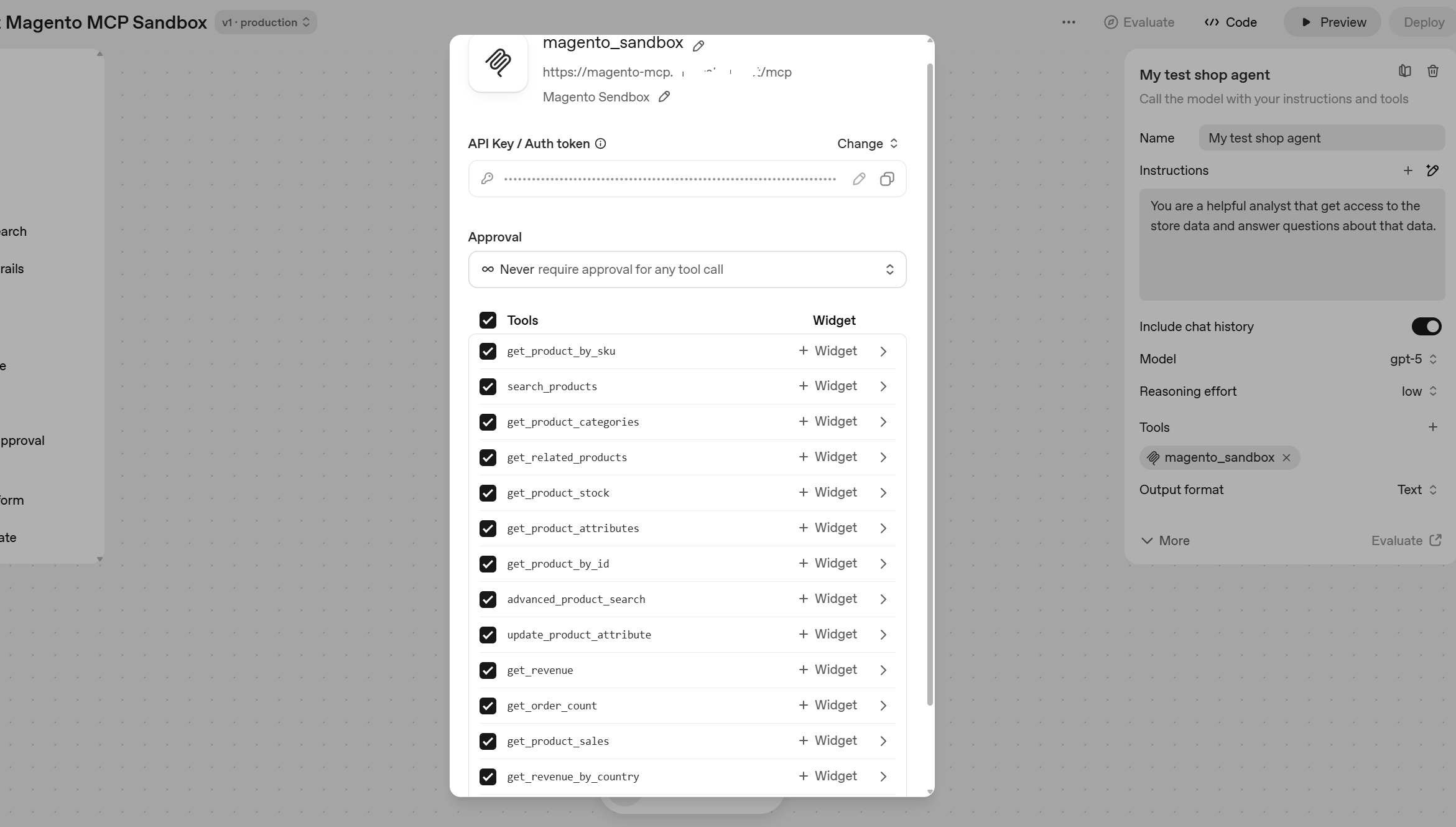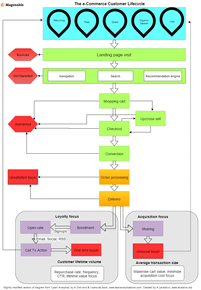eCommerce Customer Lifecycle diagram
I wrote a post about eCommerce business models some time ago with a promise to follow-up. In this post we’ll talk about eCommerce Customer Lifecycle.
The diagram below is taken from “Lean analytics” book by A.Croll & B.Yoskovitz. It is slightly modified and published with generous permission from Alistair Croll.
eCommerce Customer Lifecycle diagram
Let’s go through the stages in more details:
- Customer comes to your online store from several sources
- She either stays on the page landed (it can be product page, home page, category page) or bounces (close it very quickly). So we have here first terminal point, where we lose customer without any value extracted. Such unfortunate cases are represented as red hexagons
- Customer uses various way to find the product(s) she wants to purchase for the price she ready to pay – navigation, search, recommendation engine. If she succeed, she proceed to the next stage. Otherwise, the leaves the website – another red hexagon called “Not interested”
- Shopping cart. The product is placed to the shopping cart. From here customer can return to search of additional products (cross- and up-selling opportunity for retailer) or decide proceed to the next step – checkout. There is also possibility to lose customer there for various reason (change of mind, find better competing offer, discovered an unpleasant surprise like high delivery cost, so the customer journey can come to the end as ‘Abandonment’.
- Checkout. This is the last step, before conversion, where customer enter billing and payment details and actually pay for the product. Again there is a possibility to lose her there for different reasons – from bad UX to just no funds on customer’s account.
- Conversion. Hooray! The order is placed and typically (for most B2C websites) paid. There is still a chance to lose the customer there, such as fraud detection and cancelled transaction, or transaction cancellation by customer’s request.
- Order is processed. Retailer processes the order and prepares shipment. Possible hurdle here is order cancellation due to such reason as running out of stock (may happen if there is no real-time inventory sync). Or you can process the order, but it will take so long time that a customer is too upset.
- Order is shipped to Customer. If all good, there is a possibility to get additional value from the customer. If the customer isn’t satisfied with what she’s received it is most likely the end of the story. Yes, you can probably try to fix the situation, but for that you need at least have a complaint from the customer, so for simplicity we consider that the process ends here. There is still some value extracted in this case by the retailer, so such terminal points are represented as red rectangles, a bit different from red hexagon where no monetary value was extracted by the retailer at all.
- After delivery the process is split to 2 streams: for retailers in Acquisition and retailers in Loyalty modes
- Acquisition mode retailers focus on generating referrals, if the customer is satisfied with the product and service, there is a possibility that she refers the store to her friends and hence the retailer gets some viral traffic (return to the starting point). If it doesn’t work for this buyer the story ends here with red rectangle.
- Loyalty mode retailers focus on repeat sales from the same customer using different mechanisms (eDM, loyalty program, social media). If that work, the store gets returning visitors who can buy again. If the customer isn’t coming back to us the story ends here (One time buyer).
That’s it briefly. Probably not something completely new for experienced eCommerce professionals, but I’ve found this diagram useful when you need to revisit your business model and take a broader outlook. Sometimes we are too overwhelmed with day to day problems and tactical challenges and don’t see the forest behind the trees.
Related Posts

Magento MCP Server & Adobe Commerce MCP Server: A Practical Guide to Connecting Your Store to AI with MCP
December 10, 2025 3:49 PM

Model Context Protocol (MCP) for Online Stores: From Hype to Practical Use
December 2, 2025 11:39 AM

Connect Your Magento or Adobe Commerce Store with OpenAI Agent Builder
October 13, 2025 11:25 AM
Tags
advertisingAustraliaAverage Order VolumeB2BB2B ecommerceBigCommerceConversionDemandwareecommerceHybrisIBM Websphere Commercelanding pagesMagentomagento 1.X EOLMagento 2Magento CommunityMagento EnterpriseMagento MarketplaceMelbournemigrationmobileonline marketingopen-sourceOracleperformance optimisationresearchessearchshippingShopifysite searchSocialsocial mediaUXzoey



